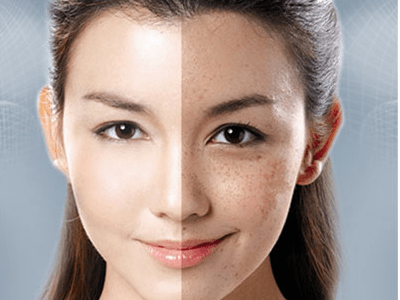Treatment of pigmentation is diverse, and it is important to choose a suitable plan for the individual.
Topical creams and whitening products: Active ingredients in creams and products can reduce the formation of melanin or promote its loss. Results typically appear after a few weeks to months of continuous use, depending on the ingredients and concentration. This method is safe.
Chemical peels: Pigmentation is deposited in the surface layer of the skin, and chemical peels can help remove old layers of skin and accelerate new skin cell turnover, which can reduce pigmentation. Chemical peels containing trichloroacetic acid, salicylic acid, or hydroquinone are effective but should be administered by a doctor due to their potency.
Laser: Lasers of different wavelengths can effectively reduce pigmentation, such as 532nm, 755nm, and 1064nm. Lasers can penetrate the skin, break down melanin, and cause it to fade with skin metabolism, making them effective for various types of pigmentation, such as freckles, sunspots, café-au-lait spots, and Ota nevus. The effect varies, and superficial pigmentation is easier to treat than deeper pigmentation. However, lasers have side effects, such as hypopigmentation, especially when using nanosecond lasers (Q-Switch Laser). Some segmented lasers, such as 1550nm and 1927nm, can also improve pigmentation effectively without causing hypopigmentation, but they are more expensive.
Intense pulsed light (IPL): IPL therapy involves using a device to emit light waves of different wavelengths at the same time, penetrating different layers of the skin to improve pigmentation. However, the energy distribution is uneven and diffuse, making IPL less effective than laser and associated with certain risks.
Diamond peel: Using a vacuum suction to attach the skin to a diamond stone, different suction and drill speed can remove the old keratin layer of the skin, accelerate metabolism, and reduce pigmentation. It is recommended to use in combination with other treatments.
Whitening induction: Using electrical currents, ultrasound, and other methods to promote the skin’s absorption of various whitening ingredients. Some instruments also include diamond peels and whitening induction functions. It is recommended to use in combination with other treatments.
In addition to treatment, daily skincare is also important. Ultraviolet rays are the main cause of melanin formation, so it is essential to apply sunscreen with an SPF of 30 or above regardless of the weather and reapply every three to four hours. Remember that reducing pigmentation does not mean permanent removal, and treatment may need to be repeated when necessary. Since everyone’s skin is different, the direction and frequency of treatment may vary. Consistency is key in the long-term battle against melanin.

